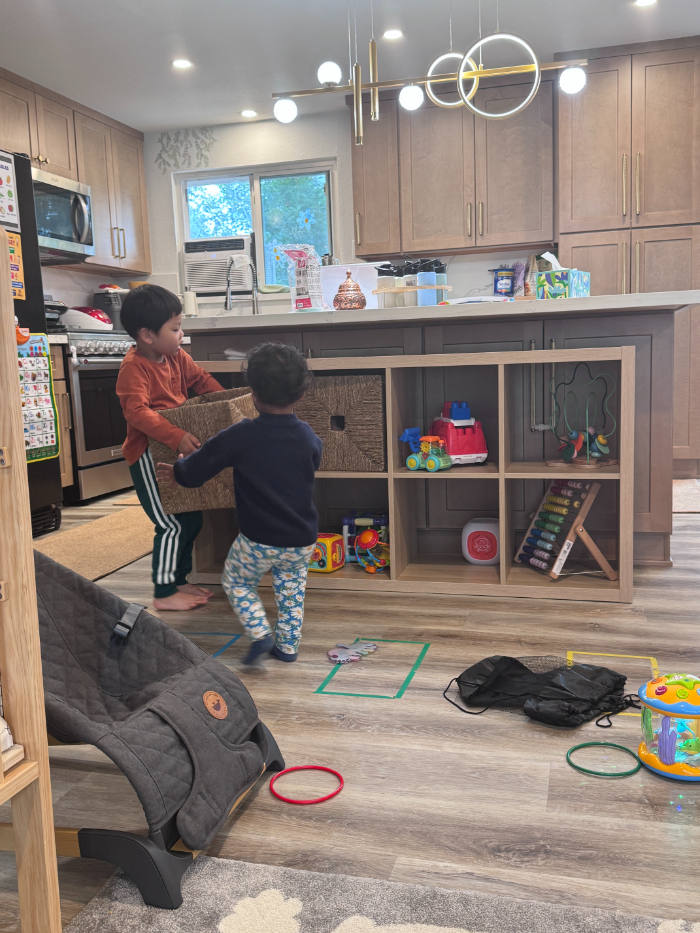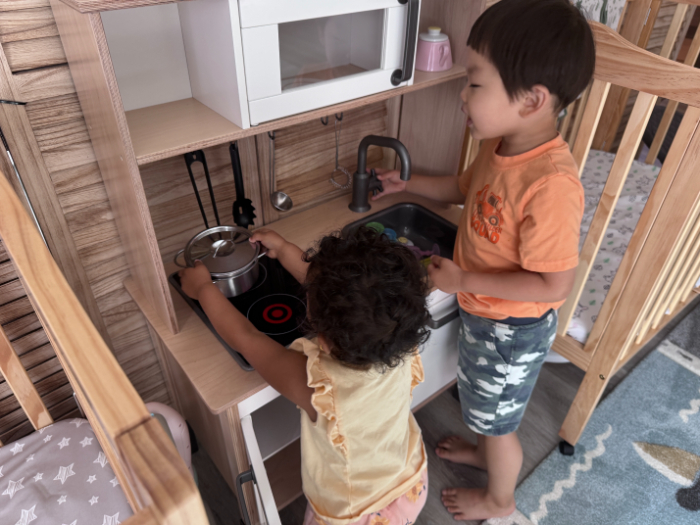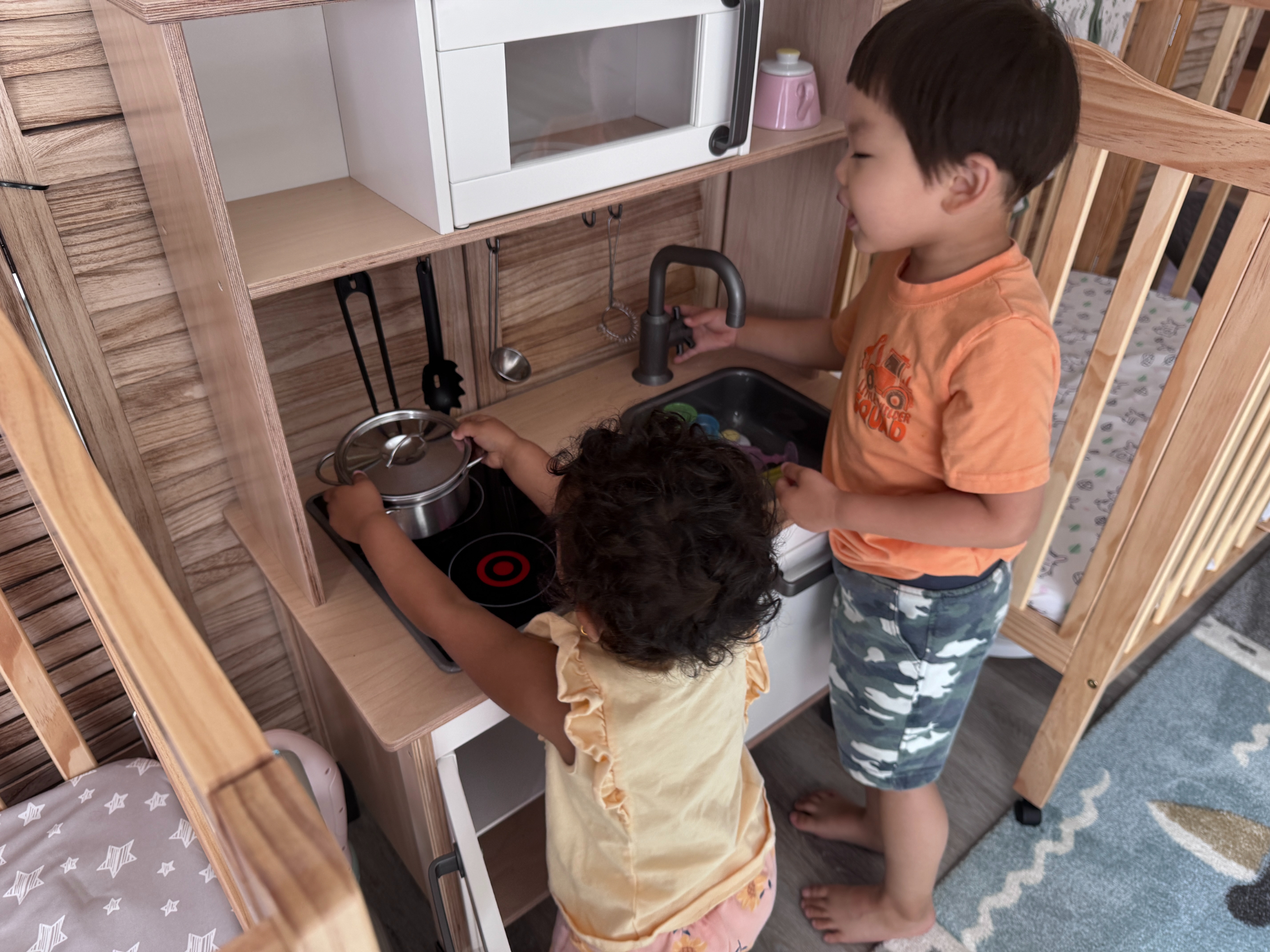Gender-neutral play in childcare creates inclusive environments where children explore freely without the constraints of traditional gender stereotypes. By offering diverse toys and activities, childcare providers can foster creativity, empathy, and confidence in infants to preschoolers. This article explores why gender-neutral play matters, practical strategies to implement it, age-appropriate toy ideas, and ways to overcome challenges. Discover expert tips to create equitable play spaces and learn how Kido Heaven supports inclusive childcare.
What Is Gender-Neutral Play?
Gender-neutral play encourages children to engage in activities and explore toys without being limited by societal expectations of “boys’ toys” or “girls’ toys.” It emphasizes open-ended, inclusive experiences that allow children to pursue their interests freely. For example, a childcare setting might offer blocks, dolls, or art supplies to all children, regardless of gender, to spark creativity and curiosity.
This approach moves away from stereotypes—like dolls for girls or trucks for boys—and creates opportunities for children to develop diverse skills. In childcare, gender-neutral play fosters environments where every child feels valued and empowered to explore.
The Role of Childcare Providers in Promoting Inclusivity
Childcare providers play a critical role in shaping young minds. By modeling inclusive behavior and offering equitable play opportunities, they help children develop positive attitudes toward diversity. Providers can challenge gender biases by ensuring all children have access to a variety of toys and activities, creating a safe space for self-expression.
For instance, a provider might encourage a boy to try dress-up or a girl to build with construction sets, reinforcing that all activities are for everyone. This intentional approach sets the foundation for breaking down stereotypes early in life.
Why Gender-Neutral Play Matters
Benefits for Child Development
Gender-neutral play supports holistic child development. Research from the National Association for the Education of Young Children (NAEYC) shows that inclusive play environments enhance creativity, problem-solving, and emotional intelligence. When children are free to explore diverse activities, they develop a broader range of skills, from fine motor abilities to social cooperation.
For example, a child playing with building blocks might improve spatial reasoning, while role-playing with dolls can nurture empathy. These experiences prepare children for diverse challenges and promote confidence in their abilities.
Breaking Down Gender Stereotypes
Traditional gendered toys often limit children’s exploration. Studies, such as those published in Child Development (2020), indicate that stereotypes reinforced in early childhood can influence career choices and self-perception later in life. For instance, girls steered toward dolls may feel less confident in STEM fields, while boys encouraged to play with trucks might shy away from nurturing roles.
Gender-neutral play counters these limitations by allowing children to explore all interests. A childcare setting that offers a mix of toys—like art supplies, puzzles, or costumes—helps children discover their passions without predefined roles.
Supporting Diversity and Inclusion
Inclusive play environments teach children to respect diversity and build empathy. When children see peers engaging in varied activities without judgment, they learn to value differences. This foundation is critical in early childhood, as it shapes lifelong attitudes toward inclusion and equity.
For example, a preschooler playing in a mixed group with neutral toys like clay or musical instruments learns collaboration and mutual respect. These experiences create a ripple effect, fostering inclusive communities both in and beyond childcare settings.

Strategies for Promoting Gender-Neutral Play
Designing Inclusive Play Spaces
Creating a gender-neutral play environment starts with intentional design. Arrange play areas to encourage equal access to all toys and activities. Avoid labeling sections as “boys’ toys” or “girls’ toys.” Instead, create mixed stations with diverse materials, such as:
- Building and Construction: Blocks, LEGO, or magnetic tiles for creativity and problem-solving.
- Creative Arts: Crayons, paint, and playdough for self-expression.
- Role-Play: Costumes, kitchen sets, or toolkits that appeal to all children.
Use neutral decor, like bright colors or nature themes, to avoid gendered cues. Ensure toys are accessible to all ages and abilities, promoting inclusivity across the board.
Training Staff for Inclusivity
Educating childcare staff is key to implementing gender-neutral play. Providers should understand how unconscious biases influence toy choices or activity assignments. Workshops, such as those offered by NAEYC or Zero to Three, can help staff recognize and address these biases.
For example, a provider might unconsciously steer girls toward dolls and boys toward cars. Training helps them encourage all children to explore freely. Role-playing scenarios or group discussions can also build confidence in promoting inclusive practices.
Engaging Parents in the Process
Parents may have questions or concerns about gender-neutral play. Communicate its benefits through newsletters, workshops, or one-on-one conversations. Share research showing how inclusive play supports child development and prepares children for diverse futures.
Offer practical tips, like suggesting parents provide neutral toys at home, such as puzzles or building sets. By aligning childcare and home practices, you create a consistent environment that reinforces inclusivity.
Age-Appropriate Gender-Neutral Activities and Toys
Infants (0–2 Years)
Infants thrive on sensory exploration, making gender-neutral toys ideal for this age. Recommended toys include:
- Sensory Toys: Rattles, textured balls, or soft stacking cups engage touch and sight.
- Musical Instruments: Small drums or xylophones encourage auditory exploration.
- Soft Blocks: Lightweight blocks promote early motor skills.
Activities like tummy time with colorful mats or singing interactive songs foster curiosity without gendered cues. These experiences lay the groundwork for open-ended play.
Toddlers (2–3 Years)
Toddlers are eager to explore and imitate. Offer open-ended toys that encourage imagination, such as:
- Building Sets: Wooden blocks or interlocking tiles for constructing.
- Puzzles: Shape sorters or simple jigsaw puzzles for problem-solving.
- Role-Play Kits: Neutral kitchen sets or doctor kits for storytelling.
Group activities like cooperative games (e.g., building a tower together) or storytelling circles promote inclusivity and teamwork. These activities help toddlers develop social skills while exploring diverse interests.
Preschoolers (3–5 Years)
Preschoolers are ready for more complex play. Provide toys and activities that encourage collaboration and creativity, such as:
- Art Supplies: Markers, clay, or watercolors for self-expression.
- Construction Kits: Larger building sets or toolkits for hands-on learning.
- Dress-Up Clothes: A variety of costumes (e.g., capes, hats, or aprons) without gender labels.
Engage preschoolers in group projects, like creating a classroom mural or playing outdoor scavenger hunts. These activities foster teamwork and allow children to explore diverse roles without stereotypes.

Overcoming Challenges in Implementing Gender-Neutral Play
Addressing Resistance from Parents or Staff
Some parents or staff may resist gender-neutral play due to traditional beliefs. Address concerns by sharing research-backed benefits, such as improved creativity and social skills. For example, explain how diverse play prepares children for varied career paths.
Offer to host a parent workshop or provide a handout summarizing the advantages of inclusive play. Use empathetic language to validate concerns while highlighting the long-term benefits for children.
Navigating Cultural or Societal Norms
Cultural norms may influence attitudes toward gender roles. Respect these differences while gently introducing gender-neutral practices. For example, start with small changes, like offering neutral toys alongside traditional ones, to ease the transition.
Engage families by sharing success stories, such as how a child discovered a new interest through inclusive play. This approach builds trust and encourages gradual acceptance.
Budget-Friendly Solutions for Inclusive Toys
High-quality toys can be expensive, but gender-neutral options don’t have to break the bank. Consider:
- Second-Hand Stores: Find affordable puzzles, blocks, or dress-up clothes.
- DIY Materials: Create sensory bins with rice or homemade playdough.
- Multi-Use Toys: Invest in versatile items like blocks or art supplies that suit all ages.
Partner with parents to donate gently used toys or seek grants from organizations like NAEYC for inclusive materials.
About Kido Heaven: Your Partner in Inclusive Childcare
At Kido Heaven, we believe every child deserves a nurturing, inclusive environment to grow and thrive. Our childcare programs prioritize gender-neutral play to foster creativity, empathy, and confidence. With expert staff and thoughtfully designed play spaces, we create opportunities for children to explore their interests freely.
Discover our services at Daycare Bothell to see how we support inclusive child development. Join us in building a brighter, more equitable future for your child.
Why KidoHeaven Stands Out
✅ Licensed in Washington State
✅ Aligned with Early Achievers standards
✅ Working Connections subsidy accepted
✅ Daily updates via Brightwheel
✅ Located in Bothell, serving Mill Creek, Lynnwood & nearby areas
✅ Nutritious snacks, safe outdoor space, & positive mealtime routines
📞 Call 206-734-2040 to schedule a tour
🌐 Enroll now
Follow Our Mealtime Moments
Stay updated with more beautiful outdoor meals and daily learning routines on:
Instagram | Facebook | Nextdoor | Yelp | Winnie | YouTube | Upwards
FAQ
1. What is gender-neutral play, and why is it important in childcare?
Gender-neutral play allows children to explore toys and activities without gender stereotypes, fostering creativity, confidence, and empathy. It’s important because it supports holistic development and prepares children for diverse futures.
2. How can I introduce gender-neutral toys without upsetting parents?
Communicate the benefits through research and examples. Host a parent meeting to explain how inclusive play supports child development and invite feedback to build trust.
3. What are some affordable gender-neutral toy options for daycare settings?
Affordable options include wooden blocks, puzzles, playdough, and second-hand costumes. Multi-use toys like stacking cups or art supplies are cost-effective and inclusive.
4. How do I handle children who prefer gendered toys?
Encourage exploration by offering diverse toys alongside their favorites. Praise their choices and gently introduce new activities to broaden their interests without pressure.
5. Can gender-neutral play benefit older preschoolers?
Yes, older preschoolers benefit from enhanced creativity, problem-solving, and social skills. Inclusive activities like group projects or open-ended play prepare them for school and beyond.



